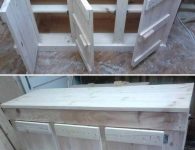

Inside Backcountry’s SoHo pop-up store in New York City.
Backcountry.com
Since 2018, Manhattan’s SoHo neighborhood has seen an influx of outdoor brands opening high-cost brick and mortar storefronts.
Walk down a particular two-block section there and you’ll find retail presences for Norrona, Fjallraven, Patagonia, Arc’teryx, Burton, and more.
In 2019, even traditionally online-only outdoor retailers like Backcountry.com got in on the action. Over the winter, they operated a short-term pop-up store in SoHo (which officially concludes on February 21.)
But the question is: Why are outdoor brands, whose DNA lies in the mountains and other far-flung places, investing in one of the highest rent retail districts in the world? And what does a branded retail store in an urban area offer these brands by way of community-building, brand awareness, and concept testing?
Paul Munford, the founder of Lean Luxe, says that while SoHo is a well-established retail neighborhood, it’s also a potential play at prestige for DNVBs and modern brands alike. “SoHo street addresses hold a certain coveted cachet,” he said.
In the case of Backcountry, this particular urban footprint helped the Utah-based brand experiment with physical retail while connecting face-to-face with the outdoor community in a very new and different context.
“SoHo offered us the opportunity to jump into the deep end of retail: The customers are discerning and have incredibly high expectations, your neighbors are considered some of the best in retail, and the market is crowded—so you have to stand out,” said Hillary Benjamin, Backcountry’s SVP of Marketing.
To tackle this challenge within the constraints of a temporary retail presence, Backcountry experimented with several types of events that ranged from group runs and climbing clinics to events with partner brands like Black Diamond.
They quickly realized the importance of collaborations and found that their most successful events came from partnering with fellow outdoor brands like Arc’teryx and Weston, as well as nonprofit partners like The Nature Conservancy.
But aside from retail and event experience, the Backcountry pop-up also drove some impressive results for the business.
Over the course of their SoHo store’s run, 20% of pop-up sales came from online orders placed in-store—and the average order value for those purchases was two times higher than the average site order value.
What’s more: A brand survey showed that 55% of customers plan to visit the brand’s website after visiting the pop-up and that 63% of visitors had a “much more positive” view of Backcountry after visiting its SoHo retail location.
Along with brand-building and sales-driving, Backcountry’s SoHo pop-up provided an opportunity for the brand to gather important customer insights through service-based interactions with “Gearheads”, their in-house equipment experts.
This service element isn’t confined to this one retailer, however—it’s a common thread shared by outdoor brands in this neighborhood. Many offer a variety of services to their community of outdoor enthusiasts such as on-site gear repair, community events, and even in-store tailoring for customers.
However, in Backcountry’s case, one-to-one service interactions illustrated some key insights and customer needs.
For example: Gearheads with specific technical expertise around skiing and snowboarding were particularly highly valued by customers, specialized services like ski and snowboard mounting were a large customer draw, and branded merchandise was the top sales performer (despite only representing a small portion of the brand’s total product offerings.)
For Backcountry and other outdoor retailers, having a SoHo retail presence appears to be a smart (albeit expensive) way to reach, connect with, and learn from customers in real-time—even when it’s only for a short stint.
“This was the perfect crucible in which we could concept test our pop-up store and find out what resonated with customers. The takeaways we got over the short three-month run will help shape how we think about omnichannel for the future,” Benjamin said.
read more at http://www.forbes.com/retail/ by Kaleigh Moore, Contributor
Business








